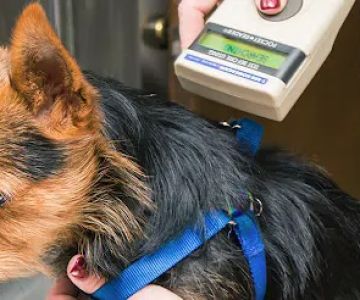Understanding the Path to Becoming a Veterinarian
Becoming a veterinarian is a rewarding career choice for those passionate about animal care, but it’s also a challenging and long journey. Whether you’re looking to work with household pets, farm animals, or even exotic species, the road to becoming a vet requires significant education and training. But how long do you need to study to be a veterinarian? Let’s dive into the details of the education path and what aspiring veterinarians can expect throughout their journey.
1. What Does It Take to Become a Veterinarian?
To become a licensed veterinarian in the United States, you’ll need to complete several stages of education and training. The process typically spans a minimum of 8 years, including undergraduate education, veterinary school, and hands-on clinical experience. This journey not only involves rigorous academics but also demands a deep love for animals and a strong commitment to improving their health and well-being.
The first step on this journey is obtaining a bachelor’s degree, which generally takes four years. While there is no specific major required, most aspiring veterinarians pursue degrees in animal science, biology, or related fields. During this time, students also complete pre-veterinary courses in subjects such as chemistry, physics, biology, and animal biology.
2. Veterinary School – The Next Step
After completing a bachelor’s degree, the next step is applying to a veterinary school. There are 30 accredited veterinary schools in the United States, and gaining admission is competitive. Typically, veterinary programs last for four years and provide a mix of classroom learning and hands-on clinical practice. Students learn advanced topics like animal anatomy, physiology, microbiology, and pathology, while also gaining practical experience working with animals under the guidance of seasoned professionals.
Most veterinary schools have highly competitive admission processes, and some may require additional qualifications, such as volunteer experience at animal hospitals, internships, or research experience. Admission also involves passing the Graduate Record Examination (GRE) or a similar standardized test in many cases.
3. Clinical Training and Experience
In addition to classroom instruction, veterinary students spend a significant amount of time in clinical settings. This clinical training typically begins in the final years of veterinary school, where students work directly with animals. They gain experience performing exams, diagnosing illnesses, and administering treatments under the supervision of licensed veterinarians. This hands-on training is invaluable in preparing students for real-world situations they will encounter once they enter the workforce.
Veterinary schools may also offer opportunities for students to specialize in certain areas of veterinary care, such as small animal medicine, large animal care, or exotic species. Internships and externships can also help students refine their skills and increase their job prospects after graduation.
4. Licensure and Certification
Once veterinary students complete their education, they must pass the North American Veterinary Licensing Examination (NAVLE), which is a standardized exam required to practice as a veterinarian in the United States. The NAVLE tests a wide range of veterinary knowledge, including clinical practices, medical procedures, and the handling of animals.
In addition to passing the NAVLE, some states may have additional requirements, such as state-specific exams or continuing education courses. After obtaining licensure, veterinarians are free to pursue careers in animal clinics, hospitals, research labs, and other healthcare settings. Some may also choose to pursue further specialization, which may require additional years of training and certification.
5. Specializations and Advanced Training
While becoming a general practitioner in veterinary medicine is the most common route, some veterinarians choose to pursue additional training in specialized fields. These can include areas such as surgery, dermatology, cardiology, and oncology. Specialization typically requires additional years of internship and residency programs that can last from 3 to 5 years, depending on the specialty.
Specialized veterinarians are often highly sought after, as they have in-depth knowledge and expertise in specific areas of animal care. For example, veterinary surgeons may perform complex surgeries that general veterinarians cannot, while veterinary cardiologists may work specifically with animals who have heart conditions.
6. Career Opportunities and Job Outlook
The job outlook for veterinarians is positive, with an increasing demand for veterinary services across the U.S. As pet ownership continues to rise and animal welfare becomes a growing priority, veterinarians are needed to provide quality care to pets, livestock, and other animals. Additionally, veterinarians are also employed in research, public health, and governmental roles, offering a diverse range of career opportunities.
In terms of salary, the average income for a veterinarian in the U.S. can vary widely based on specialization, location, and experience, but the median salary is approximately $100,000 per year. Veterinarians working in urban areas or specialized practices tend to earn higher salaries, while those in rural areas or general practice may earn less.
Conclusion – Start Your Journey to Becoming a Veterinarian
So, how long does it take to become a veterinarian? On average, it takes around 8 years of higher education and clinical training. While this is a significant time commitment, the rewards of a career as a veterinarian are immense. Not only will you be working with animals and helping them lead healthier, happier lives, but you’ll also enjoy a career that offers job stability, career advancement, and the ability to make a meaningful impact on the world.
If you are passionate about animals and ready to dedicate yourself to the education required, becoming a veterinarian could be a fulfilling and rewarding career path. The journey may be long, but the reward of helping animals in need and making a difference in their lives is worth the effort.











